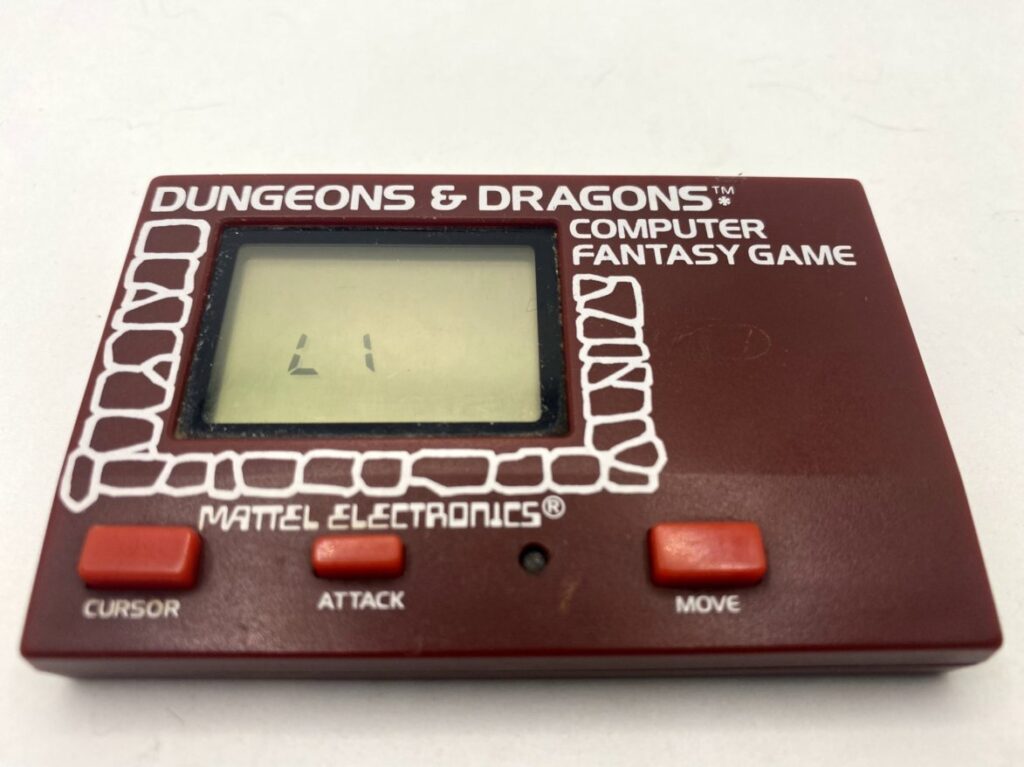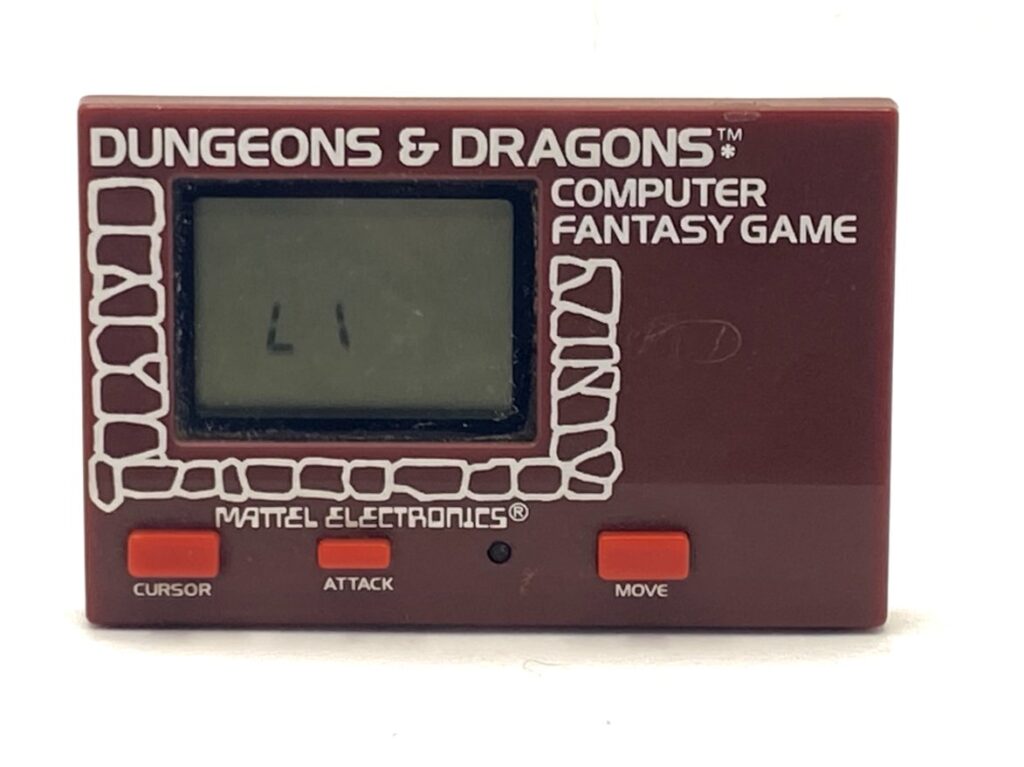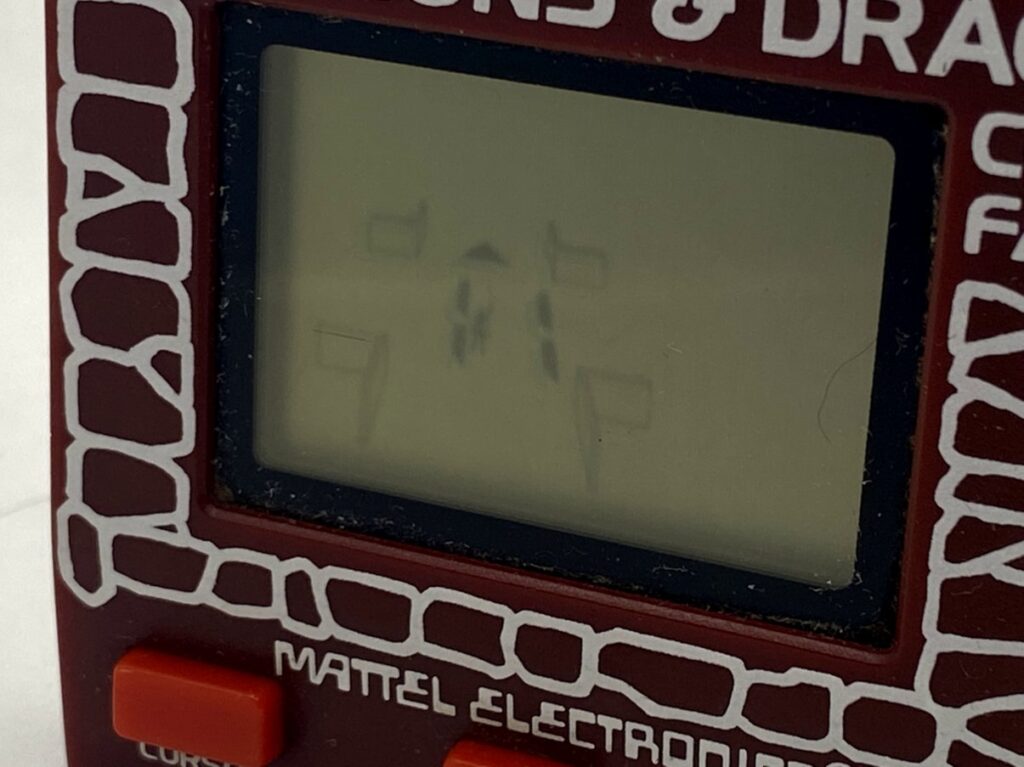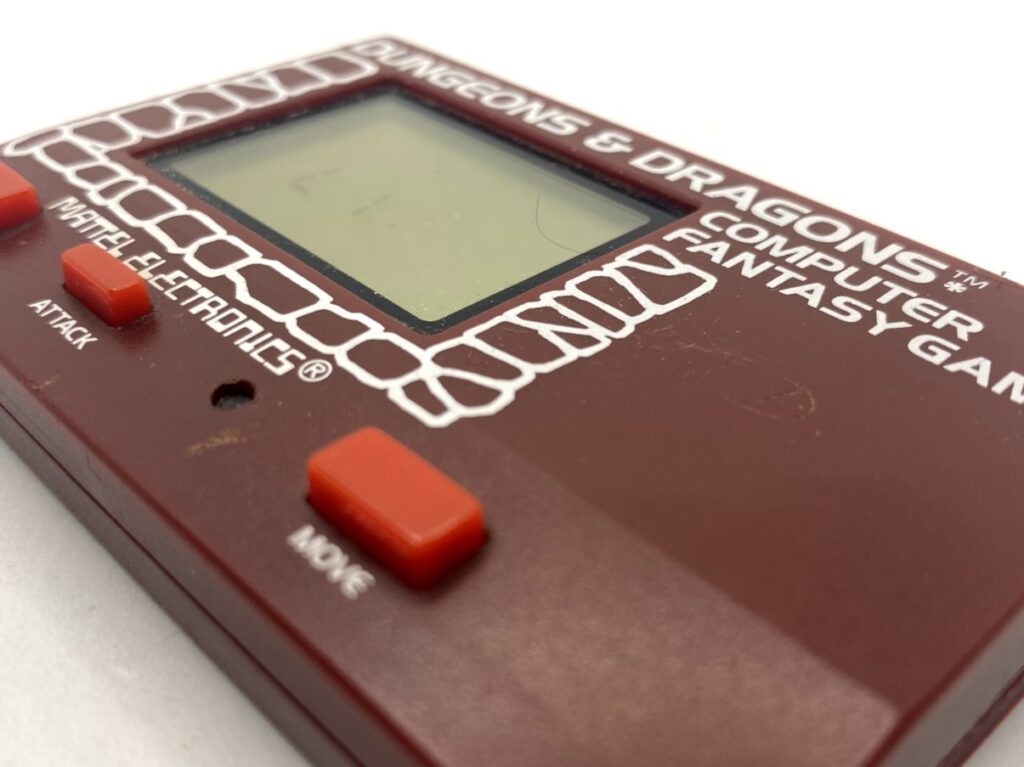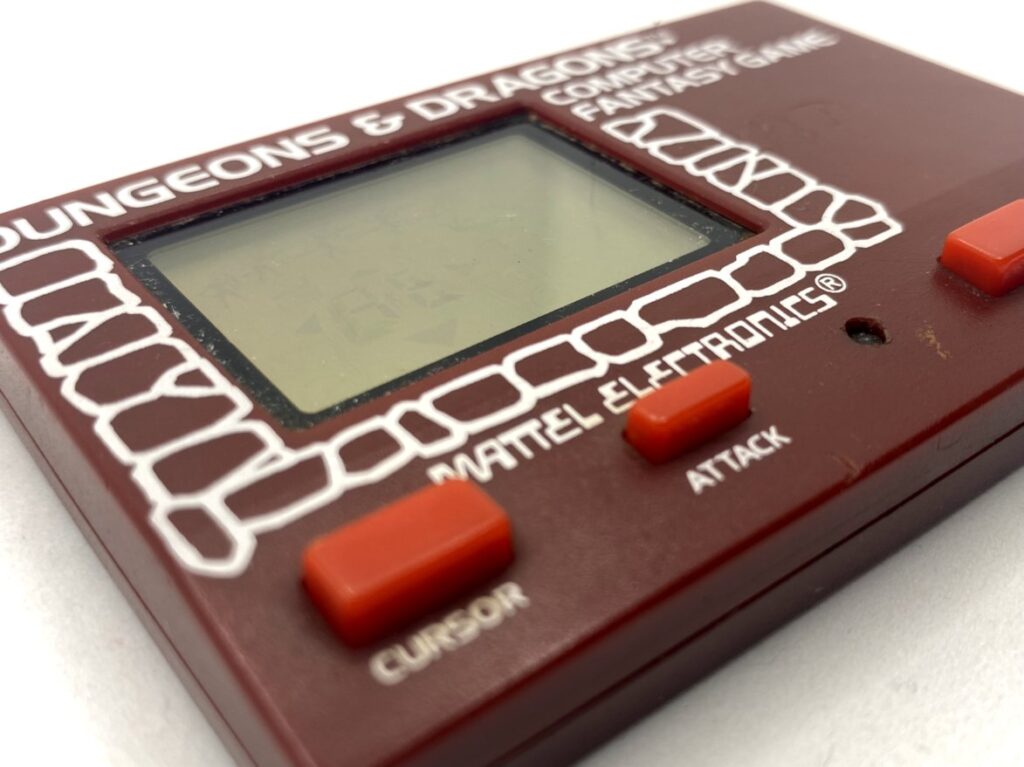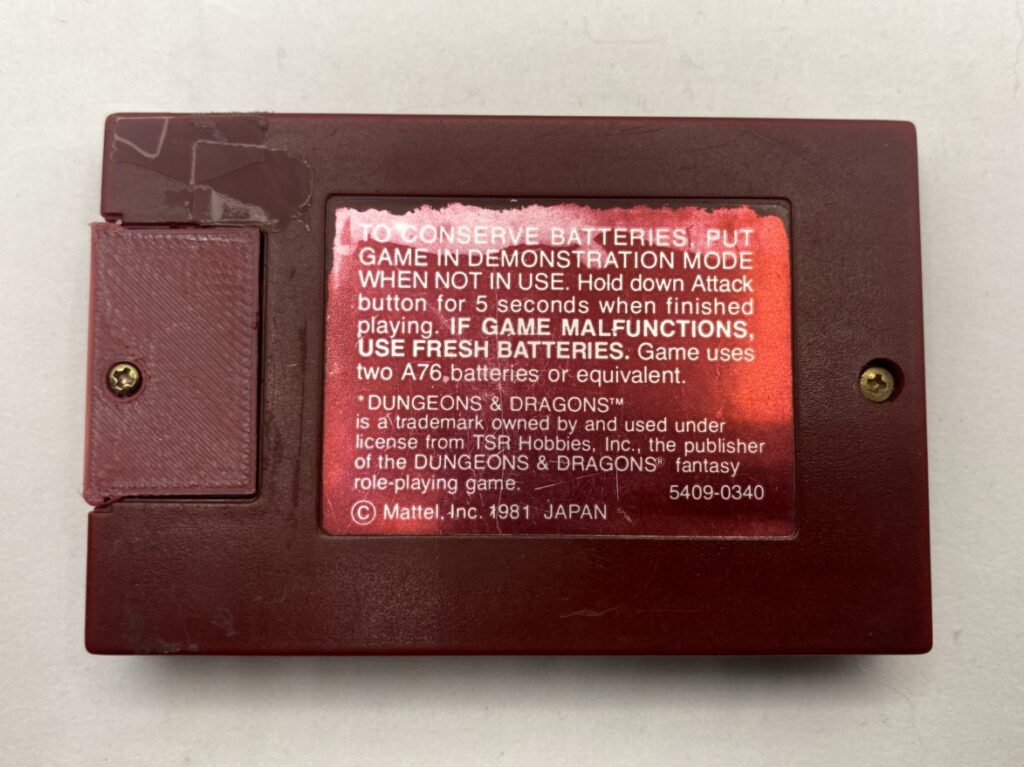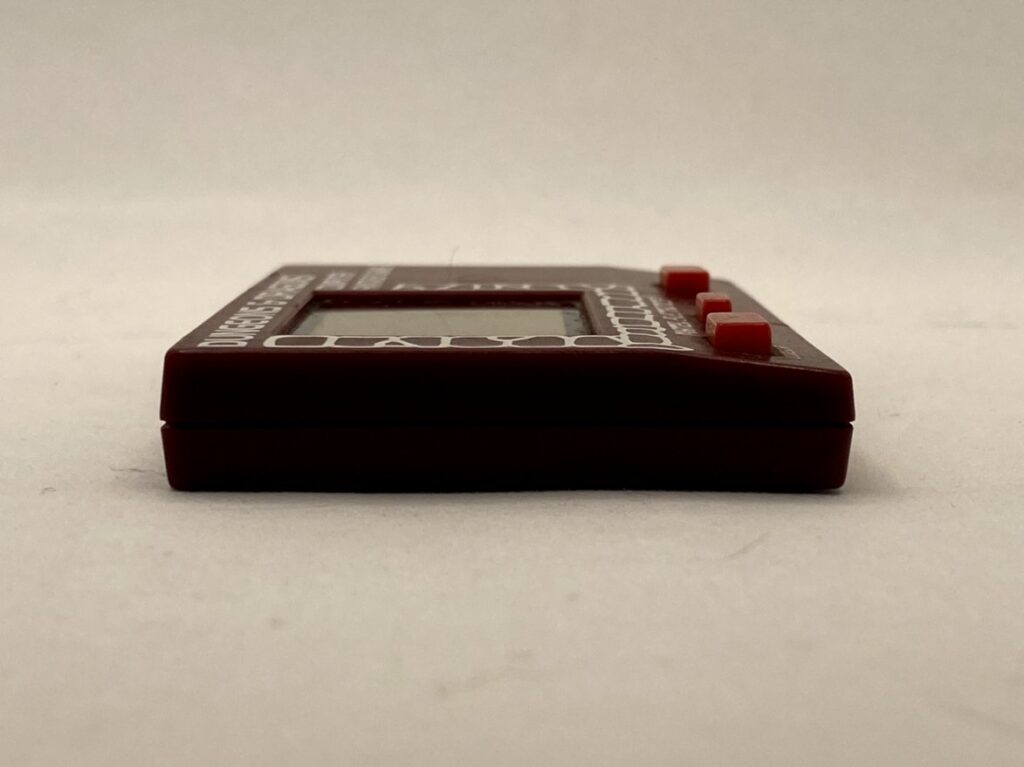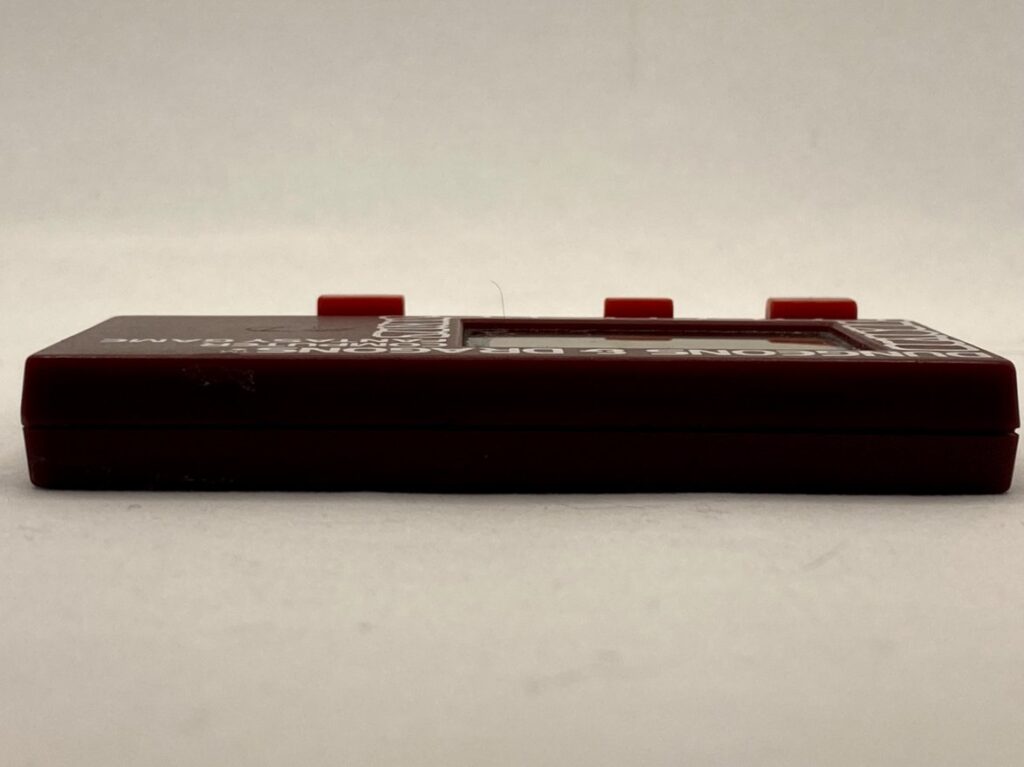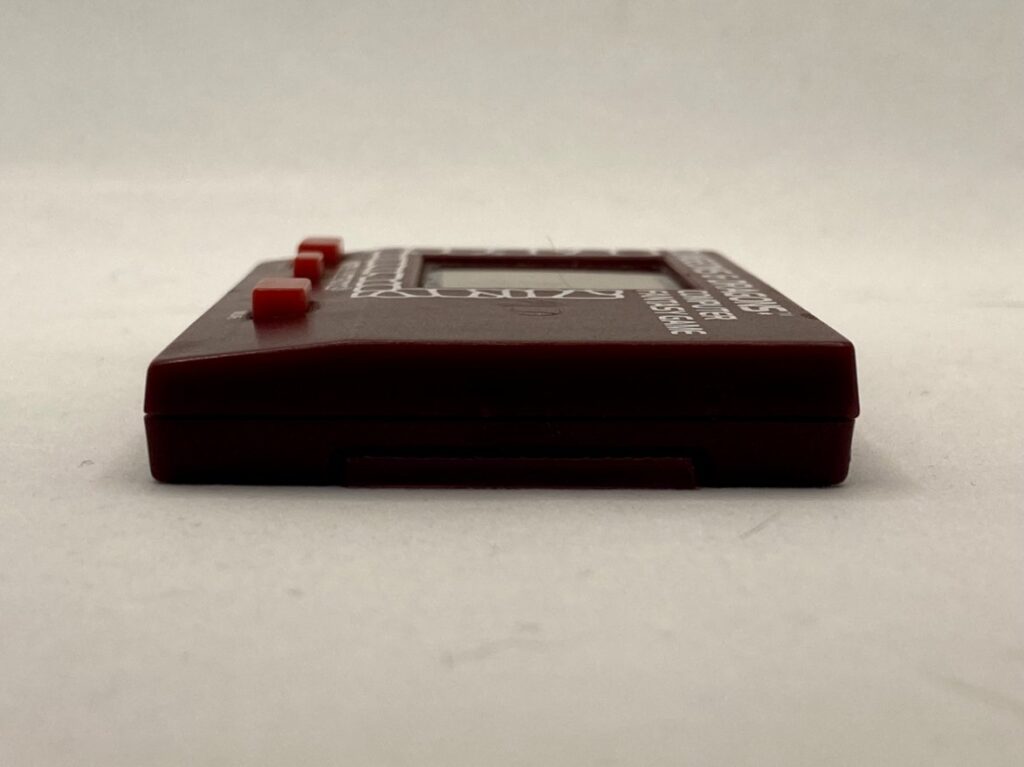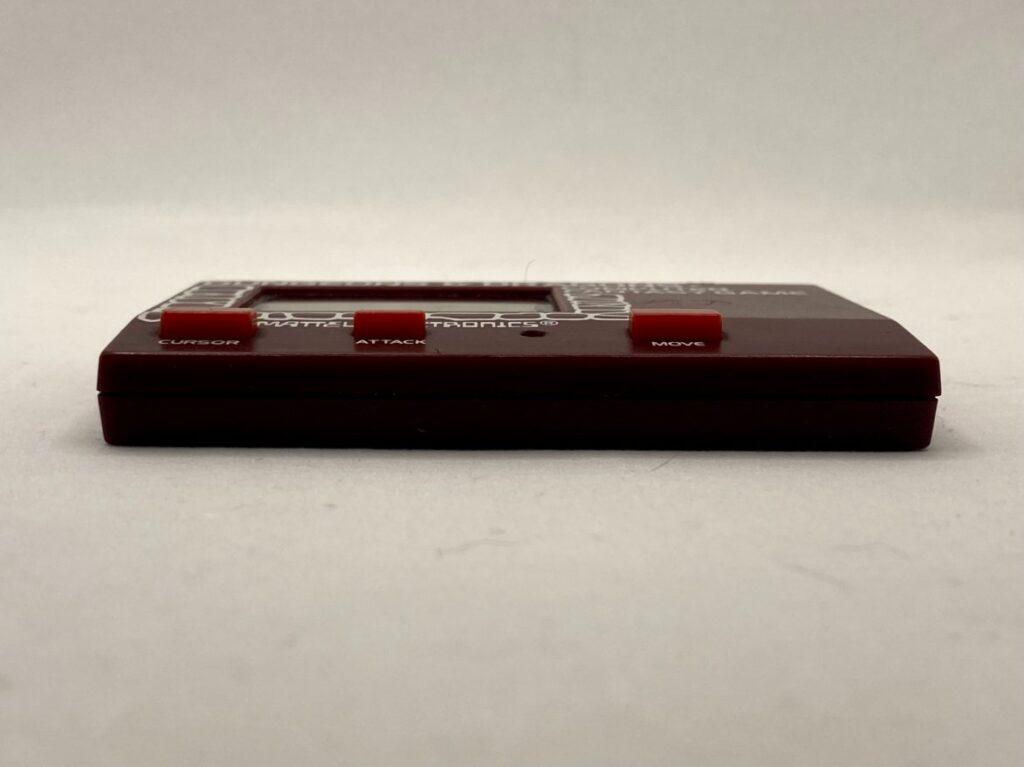The Inspiration Behind Mattel’s Handheld D&D Game
May 23, 2021Mattel Electronic’s blood-red Dungeons & Dragons handheld was inspired by a nascent 1970s adventure text game and designed by a former defense contractor with top-secret clearance.
Dungeons & Dragons Computer Fantasy Game was released in the fall of 1981 and quickly sold out, standing apart from many of Mattel Electronic’s better-known sports-themed handhelds at the time.
While ‘80s kids might have strong memories of the little electronic that let you pocket a slice of digital D&D, for designer Peter Oliphant it was one of the more straightforward projects he said he developed in his career. “Not as successful as some, more successful than others. I liked the license, so I enjoyed bringing it to life in an electronic handheld game.”
Oliphant was a child actor on shows like The Dick Van Dyke Show and The Donna Reed Show in the 1960s but shifted his attention to programming as an adult.
He said he worked at the military electronics company Bunker-Ramo Coporation doing defense contract work when he decided he wanted a career change.
“I had just gotten a top-secret security clearance to work at CIA headquarters, but I didn’t like this kind of work, so out of the blue, I sent a letter to Mattel telling them my qualifications and asking if they would like to hire me,” he said. “I did not know this, but that same week they put an ad in the newspaper asking for people with my qualifications since they needed more people for Mattel Electronics. So I got the job; it was sort of a serendipitous moment.”
His first project at the recently formed Mattel Electronics was for a handheld game called Gravity which was released in 1980.
“The display was three dots by seven dots with three states for each: off, normal, and bright,” he said. “The toy was to have three games with a gravity theme. They already had two defined: Coin Drop and Juggle (which are exactly as they sound). My task was to come up with four more game designs for this toy with a gravity theme and implement all six games on custom hardware using a 6502 processor — which I had never used before —- which I did in six weeks. They picked one of my games (Docking, a simulation of space docking) and published the toy, and I was given a promotion and a raise for doing so.”
Oliphant said when Mattel Electronics received the license for Dungeons and Dragons, he was asked to design a game that fit the theme for a handheld.
“I mentioned that one of the first D&D themed games ever done was called Hunt the Wumpus and that the design for this game was very simple, so they had me do a prototype of this game which they approved, and thus the toy was born.”
Hunt the Wumpus is a text-based adventure game that Gregory Yob created in 1973. The game has players moving through a series of connected caves, hunting for a monster called the Wumpus. The turn-based game takes place in a dodecahedron (think of a 12-sided die) maze and features bottomless pits, bats that can grab a player and move them, and an arrow used to kill the beast.
The text code for that game was originally published in Creative Computing in 1975 as something readers could manually type into their computer to play.
The game was tremendously popular, leading to two sequels and cited as the inspiration of countless future games and concepts in gaming.
In Oliphant’s Dungeons & Dragons, the game starts with an isometric view of a simplistic 3D dungeons. The player is represented by a tiny character holding what appears to be a sword aloft. The character stands at the crossroads of four hallways. An oversized letter and number tell you the character’s location, which always starts at A0. A cursor button shifts a black arrow between the four directions, and the move button moves the character in that direction.
The character and maze are both depicted in the bottom left side of the small screen, leaving room for other icons that show when different items and creatures are next to you in one of the four directions. That includes a bat that can pick you up and drop you somewhere randomly in the maze. There’s also a pit that will kill you unless you have a rope. The game’s easiest setting starts you with the rope, the middle setting places it in the dungeon, and the hardest setting has no rope.
To win, you need to discover the magic arrow and then find the dragon and shoot it with the weapon when you’re in an adjacent room. If your shot goes into the wrong room, the arrow disappears and reappears in some other random room, waiting to be rediscovered.
An ominous four-tone bit of music plays every few seconds as you wander the maze. Each move is underscored with a tapping sound meant to connote movement. If you fall in a pit, you hear the descending sound of your plummet followed by a couple of notes of a death dirge.
Unlike Hunt for the Wumpus, D&D’s gameplay takes place in a 10 by 10 grid, with each square representing a different room.
Each game randomly generates the location of the dozen pits, the magic arrow, rope, and dragon.
Once you win, you’re given a score based on how long it took you to beat the game, one point for every five seconds. Like golf, the lowest score is the best.
The entire game, with its goofy, off-set LCD screen and odd illustration of white-outlined cobblestones, is about the size of an inch-thick or so credit card.
Oliphant said the game was much easier to code because it was turn-based and used a set of rules rather than relying on real-time action.
“Since the game is turn-based, I thought the layout was good,” he said. “The LCD art was very good — you could easily tell the creatures were bats and a dragon. So I was pleased with the final product.”
He noted that while he created the prototype, another group was responsible for programming the production version that was sent to market. But he does recall that it was a system that had very little memory and used every bit of it.
“It wasn’t as complex as my other games,” he said. “It probably was one of the easier projects I have done in terms of my involvement.”
Oliphant believes Mattel Electronics decided to reach so far afield from its typical sports games for this handheld because they were trying to acquire several different licenses for new properties to expand the kinds of games they were doing. The result was licensed games like Battlestar Galactica, Flash Gordon, and Masters of the Universe, and non-licensed oddities like Chess, Backgammon, and the Horoscope Computer.
Janice Bender, who was working for Daniel J. Edelman Public Relations at the time, was an account supervisor on the Mattel Electronics business handling all of the handheld games, though she said a majority of their work was spent promoting the Horse Race Analyzer and introducing the Intellivision console.
Bender said she remembers promoting the D&D handheld on college campuses, but recalls it wasn’t treated much differently than any of the other handhelds made by the company at the time. That may have been because Mattel was in a ferocious battle with Atari at the time over home consoles and Atari, as Bender noted, “was killing us.”
But for many kids of the ‘80s, like myself, the diminutive TSR Hobbies licensed toy was a sort of handheld holy grail, mashing together the joys of gaming with the fantasy of Dungeons & Dragons, all in a bit of plastic that could be easily slipped out of a pocket when your teacher wasn’t looking.
Love retro handhelds? Well then, have I got a bunch of stories, videos, and pictures for you.
